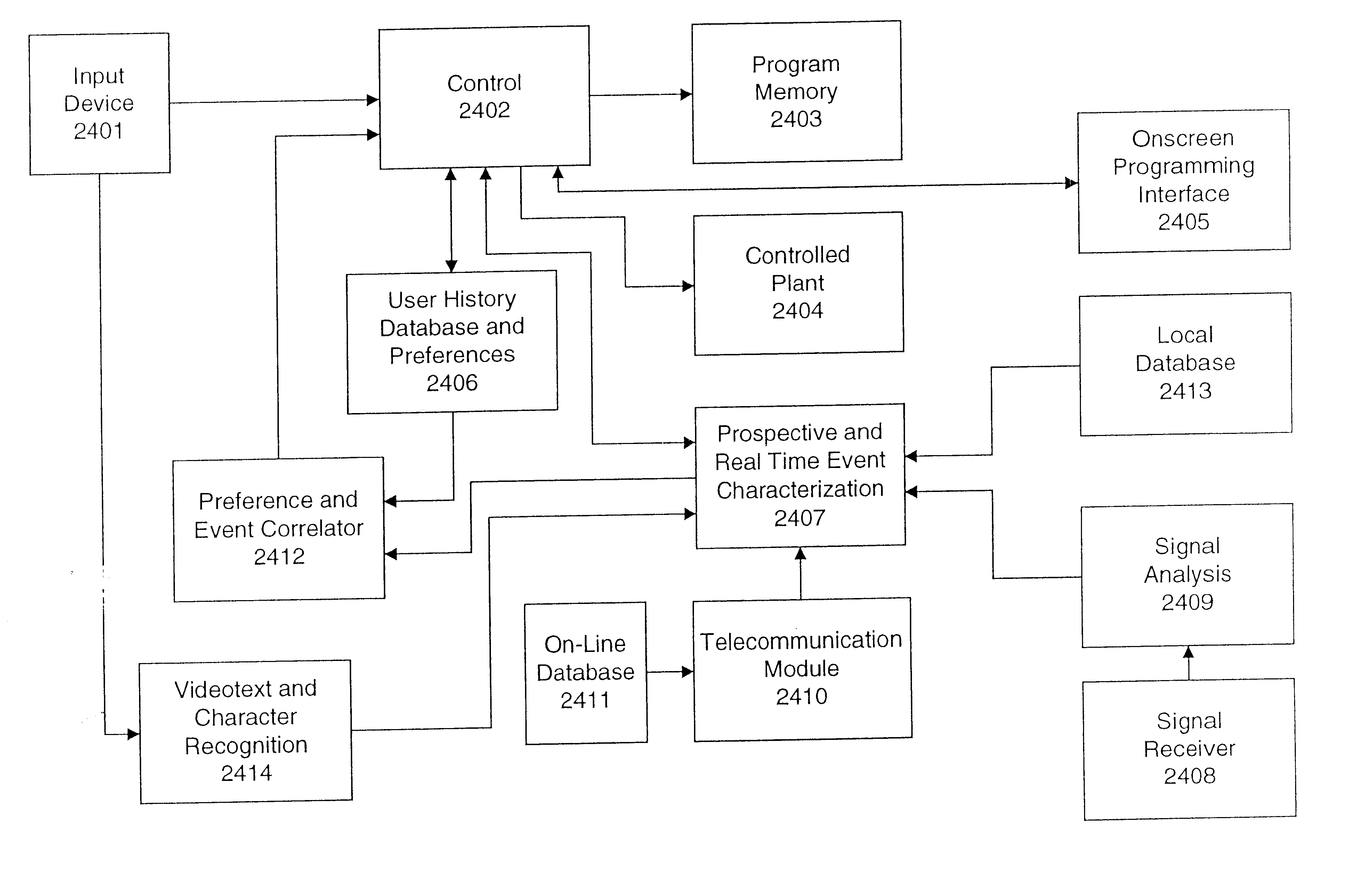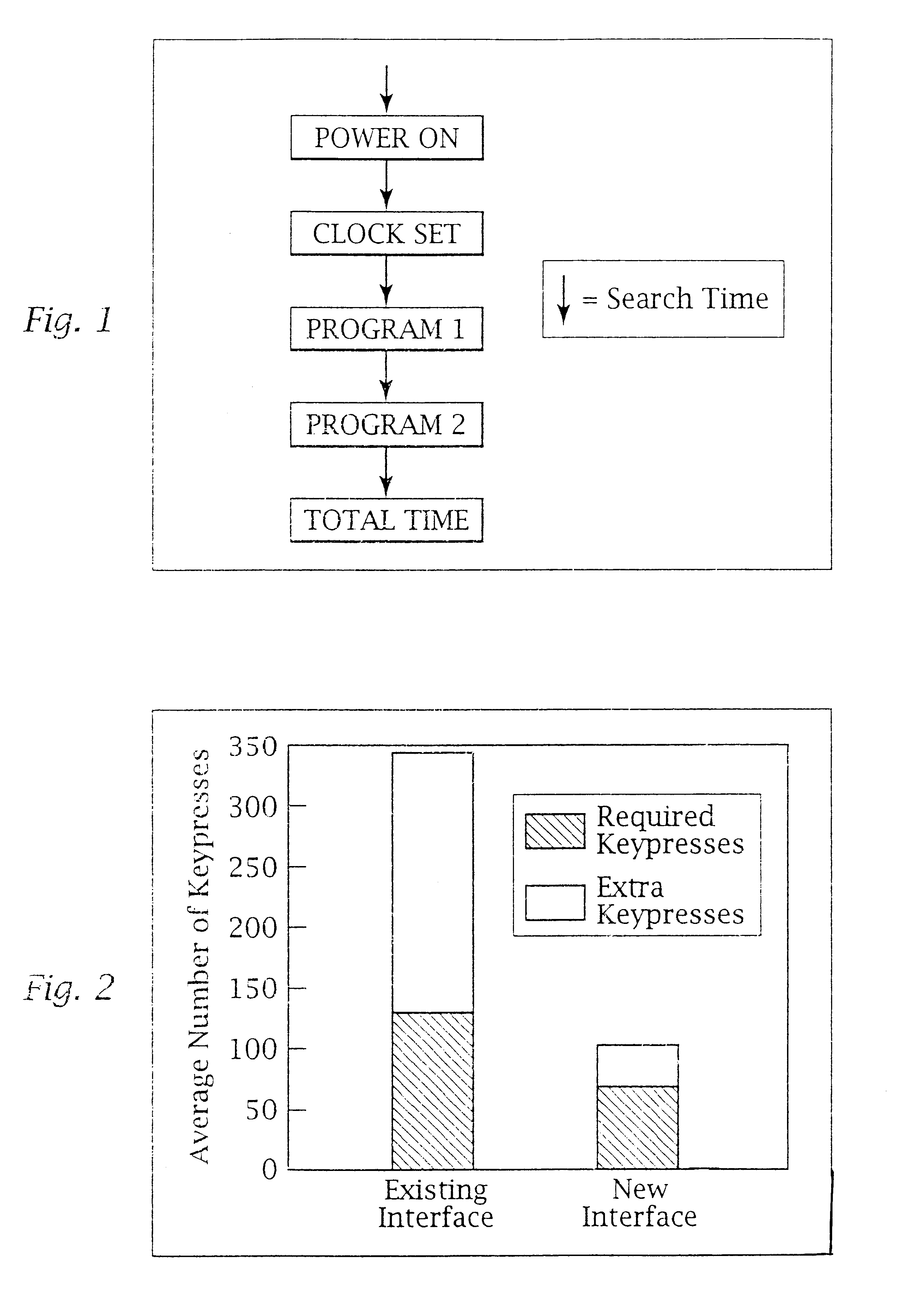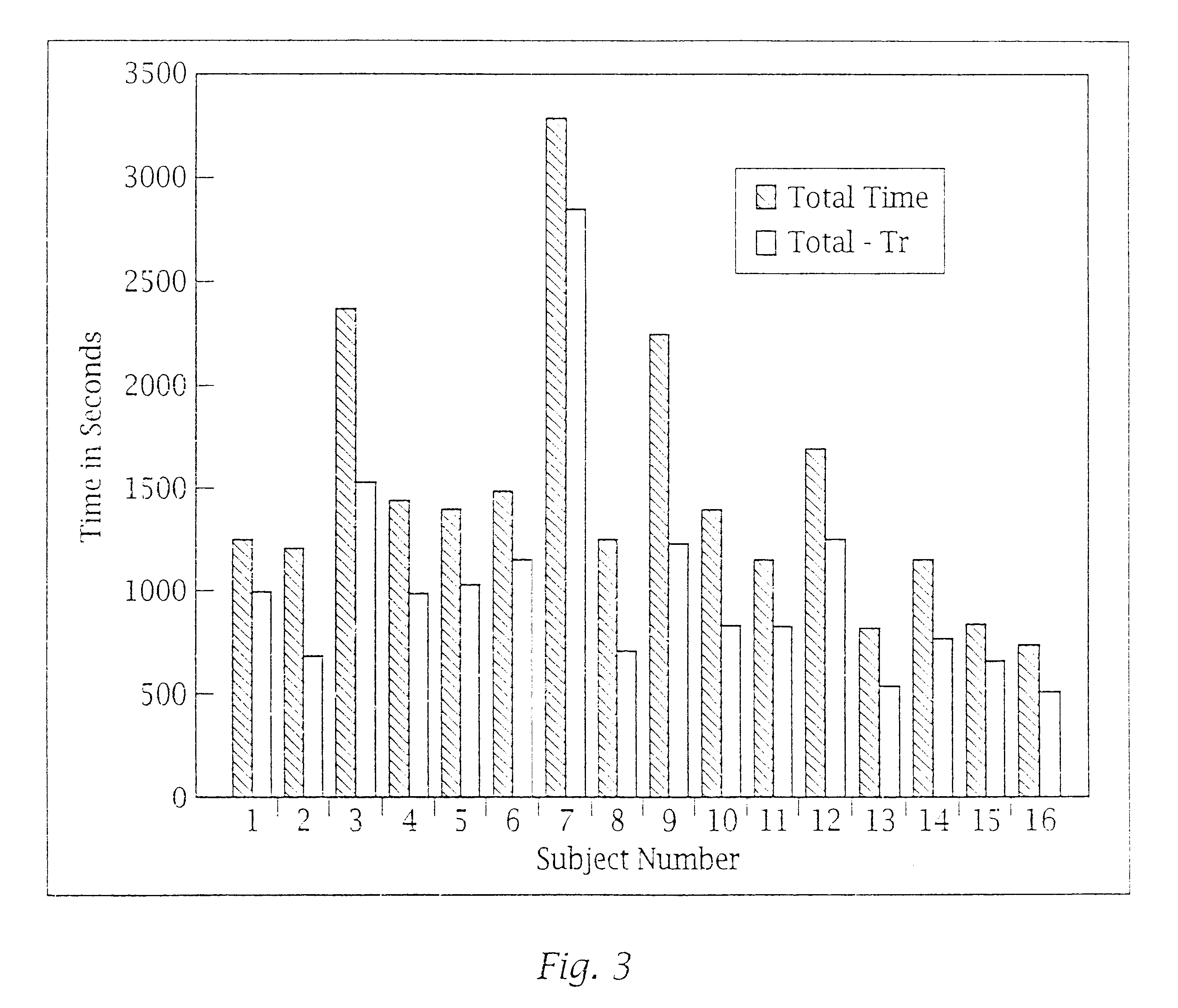Ergonomic man-machine interface incorporating adaptive pattern recognition based control system
a man-machine interface and adaptive technology, applied in program control, monitoring/identification/recognition, broadcast services, etc., can solve the problems of limiting the productivity of computer operators, the time necessary, and the difficulty of mastering devices with complex functionality with many options, so as to facilitate user interaction and minimize learning and searching time , the effect of facilitating the user interaction
- Summary
- Abstract
- Description
- Claims
- Application Information
AI Technical Summary
Benefits of technology
Problems solved by technology
Method used
Image
Examples
example 2
Serial Recording Medium Index
In a preferred embodiment of the present invention, in a VCR, in order to track the content of the tape, a directory or a catalog is recorded, preferably digitally, containing the programming information, as well as additional information about the recorded programs, in a header, i.e., at the beginning of the tape, or at other locations on the tape. The device may also catalog the tape contents separately, and based on an identification of the tape, use a separately stored catalog. A preferred format for storing information is shown in FIG. 19.
Thus, if there are a number of selections on the tape, the entire contents of the tape could be accessible quickly, without the need for searching the entire tape. In a sequential access medium, the tape transport apparatus must still shuttle to the location of the desired material, but it may do so at increased speeds, because there is no need to read the tape once the location is determined; after the tape transp...
example 3
Serial Data Medium Index
Another aspect of the present invention relates to the cataloging and indexing of the contents of a storage medium. While random access media normally incorporate a directory of entries on a disk, and devices such as optical juke boxes normally are used in conjunction with software that indexes the contents of the available disks, serial access mass storage devices, such as magnetic tape, do not usually employ an index; therefore, the entire tape must be searched in order to locate a specific selection.
In the present invention, an area of the tape, preferable at the beginning of the tape or at multiple locations therein, is encoded to hold information relating to the contents of the tape. This encoding is shown in FIG. 19, which shows a data format for the information. This format has an identifying header 1901, a unique tape identifier 1902, an entry identifier 1903, a start time 1904, an end time 1905 and / or a duration 1906, a date code 1907, a channel code...
example 4
Controlled Encryption and Accounting System
The present invention also allows for scrambling, encryption and locking of source material, and the receiving device selectively implements an inverse process or a partial inverse process for descrambling, decryption or unlocking of the material, much as the Videocipher series systems from General Instruments, and the fractal enciphering methods of Entertainment Made Convenient.sup.2 Inc. (EMC.sup.2) and Iterated Systems, Inc. The present invention, however, is not limited to broadcasts, and instead could implement a system for both broadcasts and prerecorded materials. In the case of copying from one tape to another, such a system could not only provide the herein mentioned library functions of the present invention according to Example 2, it could also be used to aid in copy protection, serial copy management, and a pay-per-view royalty collection system.
Such a system could be implemented by way of a telecommunication function incorporat...
PUM
| Property | Measurement | Unit |
|---|---|---|
| size | aaaaa | aaaaa |
| brightness | aaaaa | aaaaa |
| height | aaaaa | aaaaa |
Abstract
Description
Claims
Application Information
 Login to View More
Login to View More - R&D
- Intellectual Property
- Life Sciences
- Materials
- Tech Scout
- Unparalleled Data Quality
- Higher Quality Content
- 60% Fewer Hallucinations
Browse by: Latest US Patents, China's latest patents, Technical Efficacy Thesaurus, Application Domain, Technology Topic, Popular Technical Reports.
© 2025 PatSnap. All rights reserved.Legal|Privacy policy|Modern Slavery Act Transparency Statement|Sitemap|About US| Contact US: help@patsnap.com



